The fashion industry as always is changing rapidly, trends come and go and these days many fashion designers are thinking beyond gender. The idea of gender-fluid fashion has been attempted to some degree during the past in the form of designing certain items that fit for both genders or feminizing men’s clothes and masculinizing women’s clothes. “I always wonder who decided that there should be a difference in the clothes of men and women.” Yohji Yamamoto told the New York Times in 1983 (Cordero). These days the lines of gender in fashion are not as clear as they once were. Clothing Items that were specifically made for men in the past are now being found in women’s closets. These days men are more comfortable trying on clothes, colors, or patterns that once were considered feminine. The idea of gender-fluid fashion is stronger than ever now and I believe it is going to stay with us this time for good and not fade away like a trend.
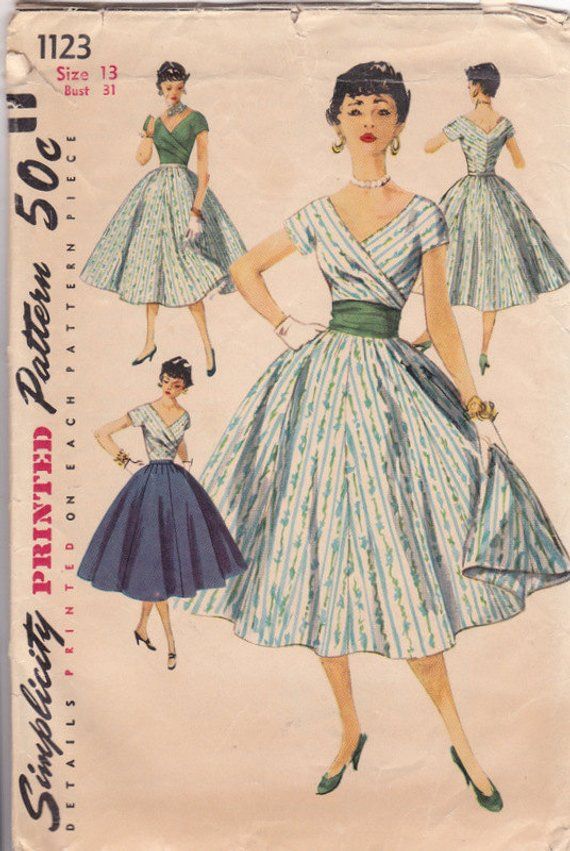
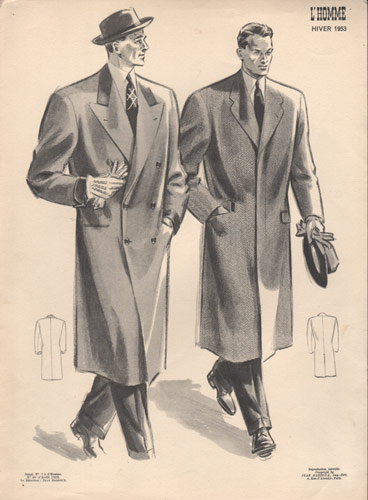
Leading up to and following WWII, gender roles were established and rarely questioned. Men worked and did masculine things and women stayed homed and raised children. Men and women dressed strictly with their gender norms and those who didn’t were often mock
During the 1960s the second-wave of feminism grew popular in the united states and they challenged t traditional gender roles imposed on men and women after WWII. Designers like Pierre Cardin, Andre Courreges, and Paco Robane brought the unisex look on Paris runways, designs with simple silhouettes and graphic patterns that had no associations with gender. In 1968, The New York Times first used the word “unisex” to describe the clothing designed for both males and females. The department stores added unisex sections, “his-n-hers” clothing became a trend and both men and women pushed against the gender norms.
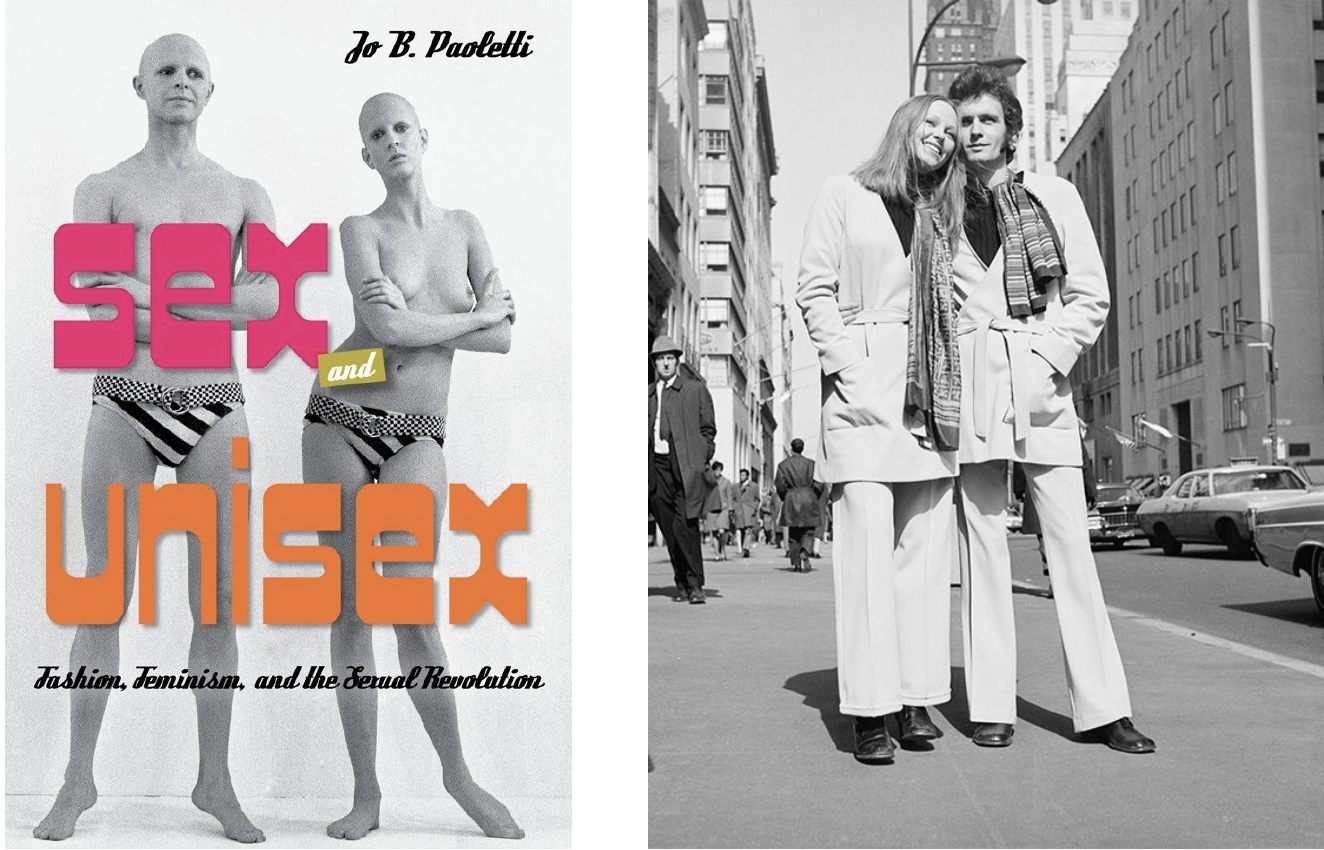
At first, all of these changes to blur the differences between men and women looked like a success but it ended up highlighting the differences even more. Many children were mistaken for the opposite sex. Trying to feminize men’s clothing also did not work either because many people associated feminine clothing with homosexuality and it was a time that homosexual men were trying to hide. The trend did not last long and in 1969 most department stores stopped stocking unisex clothing and the trend stopped (Tradlands).
In the 1980s, gender neutral fashion became a trend again with the introduction of the Japanese designer to Europe. Rei Kawakubo of Comme des Garcons and Yohji Yamamoto introduced their collections to the Parisian public for the first time. Their designs were loose fitted and had abstract shapes and also challenged the gender-oriented fashion. For the westerners who had held for long the notions of beauty and specific gender in fashion, their garments seemed absurd. Their artistic philosophy of “innovation” and “to do things that had never been done before” over time gained a measure of positive acknowledgment from the western public and inspired many designers along the way (Marra-Alvarez).
Gender-neutral fashion has also been attempted by many artists such as David Bowie and Kurt Cobain duing the 80s and 90s. They helped a lot to normalize this way of style. David Bowie pushed the boundaries of gendered fashion; he performed in heels and wore dresses, blouses, and tight jumpsuits. Kurt Cobain also posed in ballgowns and house dresses and pioneered a gender-neutral grunge scene during the 90s that men and women wore the same style with jeans, flannel shirts, combat boots, and knit caps. Ellen Degeneres, TV host, also challenged gender-oriented fashion with her tomboy style.
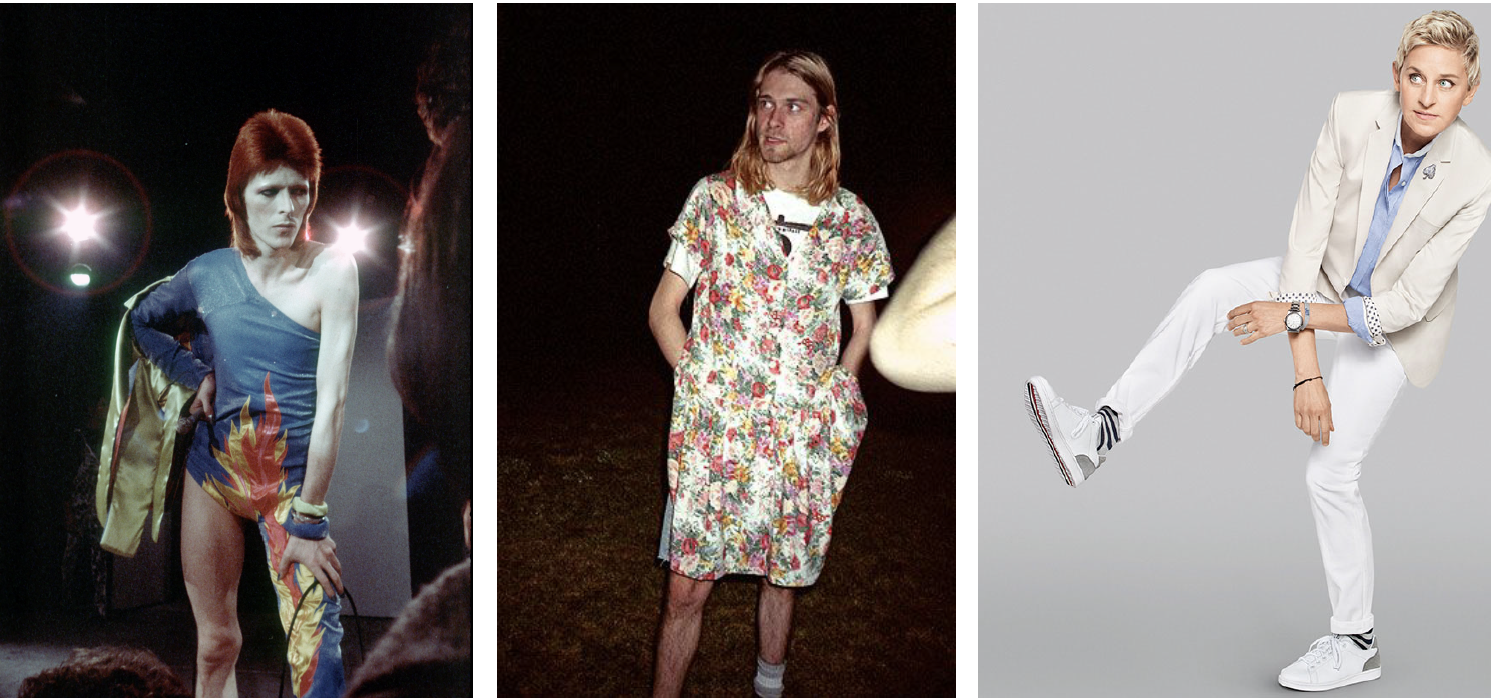
Left to right: David Bowie,Kurt Cobain, Ellen Degeneres
These days many iconic fashion designers and young designers are designing beyond gender. Rad Hourani is a Canadian designer that first brought genderless designs on couture runways in 2014. He has come up with his formula for genderless fashion. Not too tight-fitting, not too baggy, a straight-line silhouette that gives the wearer a longer body that looks sleek and sharp (Harilela). His approach to design is not feminizing men’s clothes or masculinizing women’s clothes, instead, his designs meet in the middle. He is creating a neutral area between men's and women’s wardrobes.
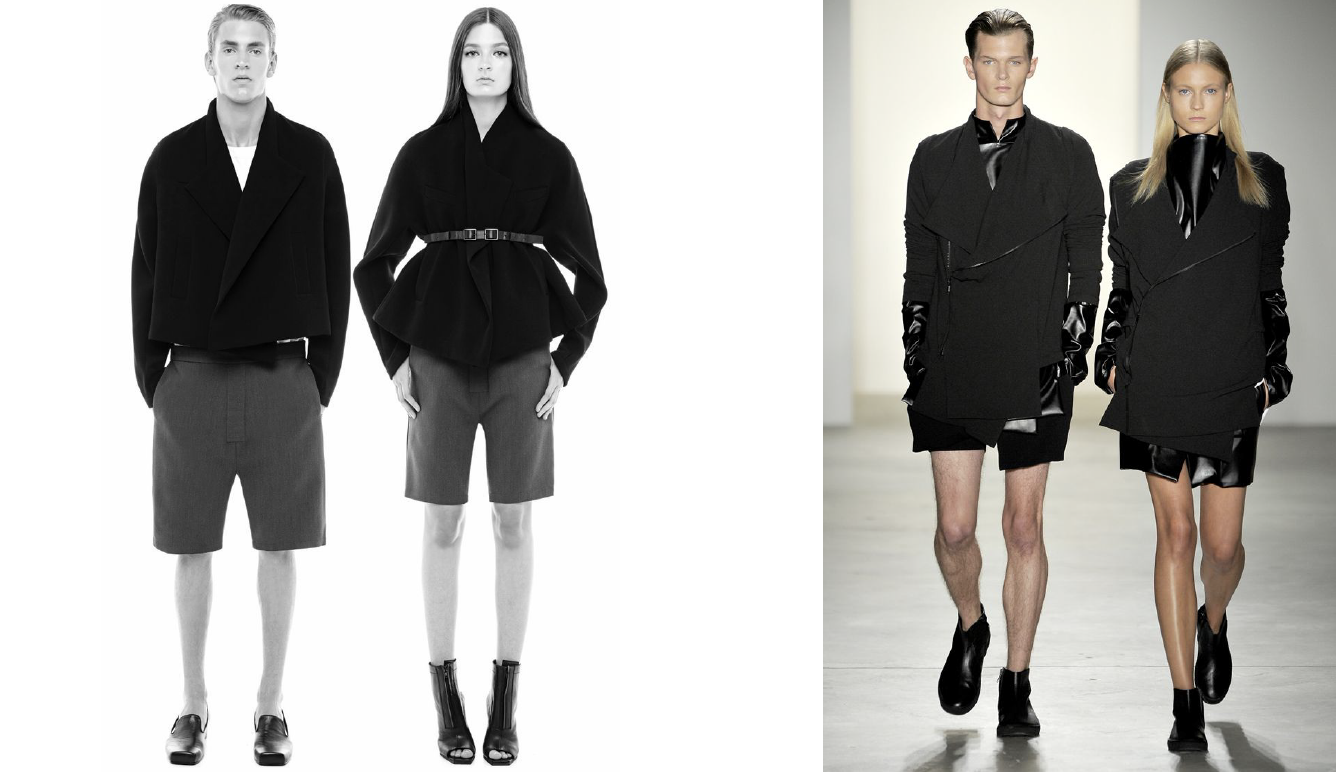
Vivienne Westwood British designer pushes the lines between men's and women's wardrobes. When designi she does not think about if either a color or a specific type of garment is masculine or feminine, she does not separate men's and women’s wardrobes. She also takes traditional masculine and feminine pattern designs and textiles and mixes them all up until they are indistinguishable
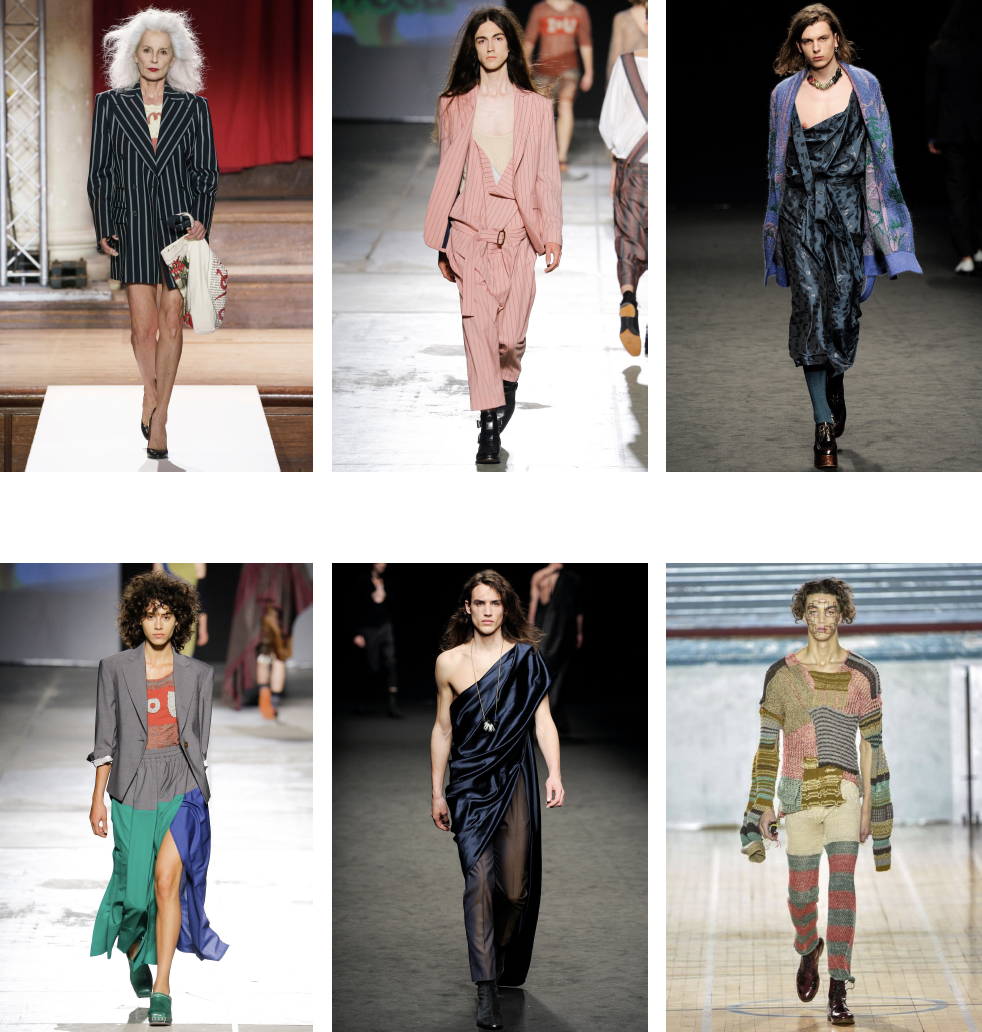
Rick Owens also create genderless designs in a very creative way. I sometimes notice that he uses the same designs for his men's and women’s runway shows.
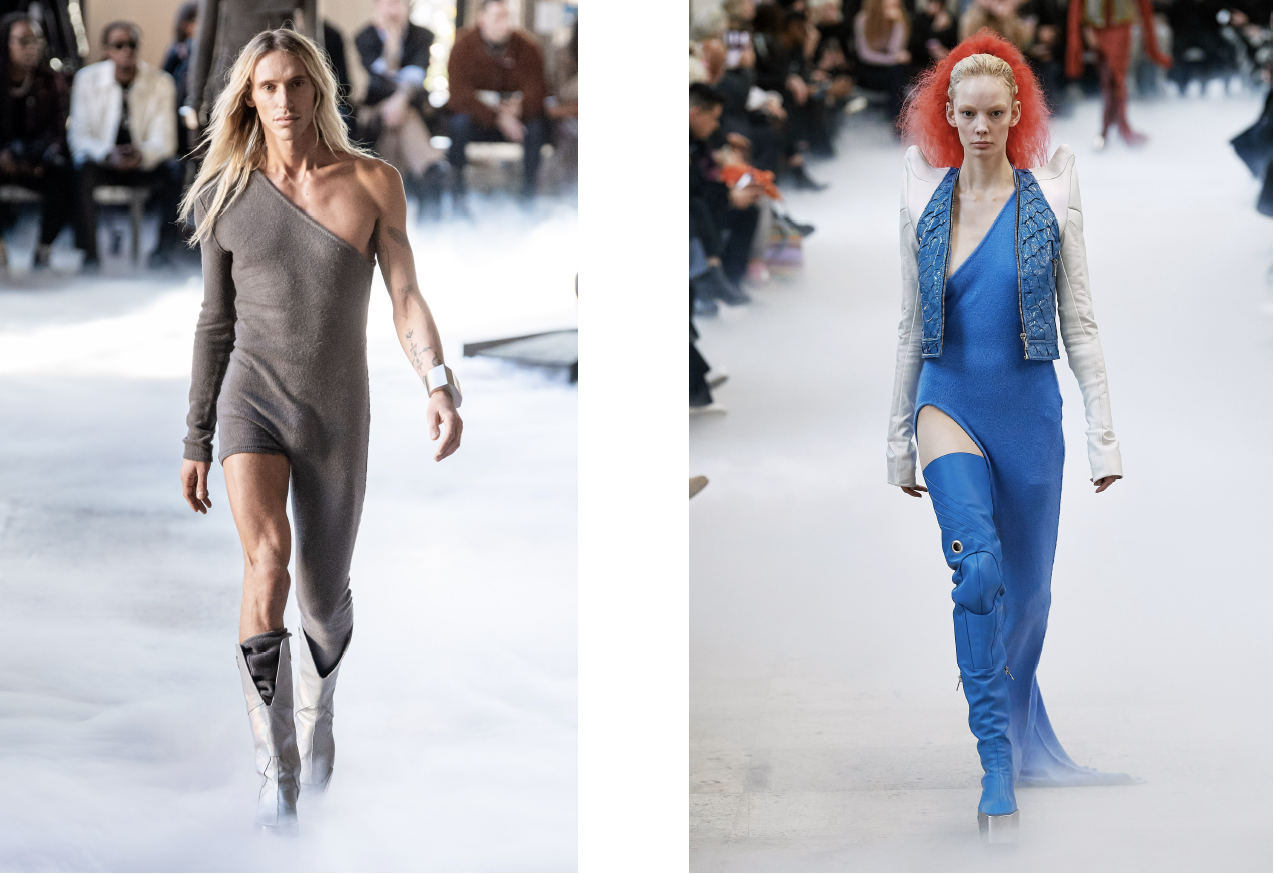
Genderless fashion is being practiced by many Iconic and young fashion designers these days. The strict approach to fashion that once was established after WWII has lost its meaning. Many designers are now designing clothes that fit both genders. Women have adopted men’s clothes for a long time now. But still, most men somehow hesitate to adopt women’s garments as everyday-wear even though they are being shown every season on the runway. In my opinion, the approaches to genderless fashion not just erase the invisible line that has been separating men and women for such a long time, it also brings them closer. I believe the legalization of same-sex marriage and efforts of the LGBT community has brought more open-mindedness towards a non-strict way of dressing and I believe this is not going to be a trend this time. Gender-neutral dressing is going to stay and every year more people would be attracted to it. What is better than wearing what you like and comfortable with.
Works cited:
“How unisex clothing came to be”. Tradlands. https://tradlands.com/pages/how-unisex-clothing-came-to-be
Harilela, Divia. “Rad Hourani has found success in the niche concept of genderless dressing. Style”. 19 Apr 2017 https://amp.scmp.com/magazines/style/article/1030636/unisex-appeal-genderless- dressing-rad-hourani
Cordero, Robert. “Fashion’s future isn’t genderless labels, it’s genderless shoppers.”
Highsnobiety. June 2019
https://www.highsnobiety.com/p/genderless-fashion-consumers/?format=amp
Marra-Alvarez, Melissa. “When the west wore east”. Spring 2010 https://www.kci.or.jp/research/dresstudy/pdf/ D57_Marra_Alvarez_e_When_the_West_Wore_East.pdf





